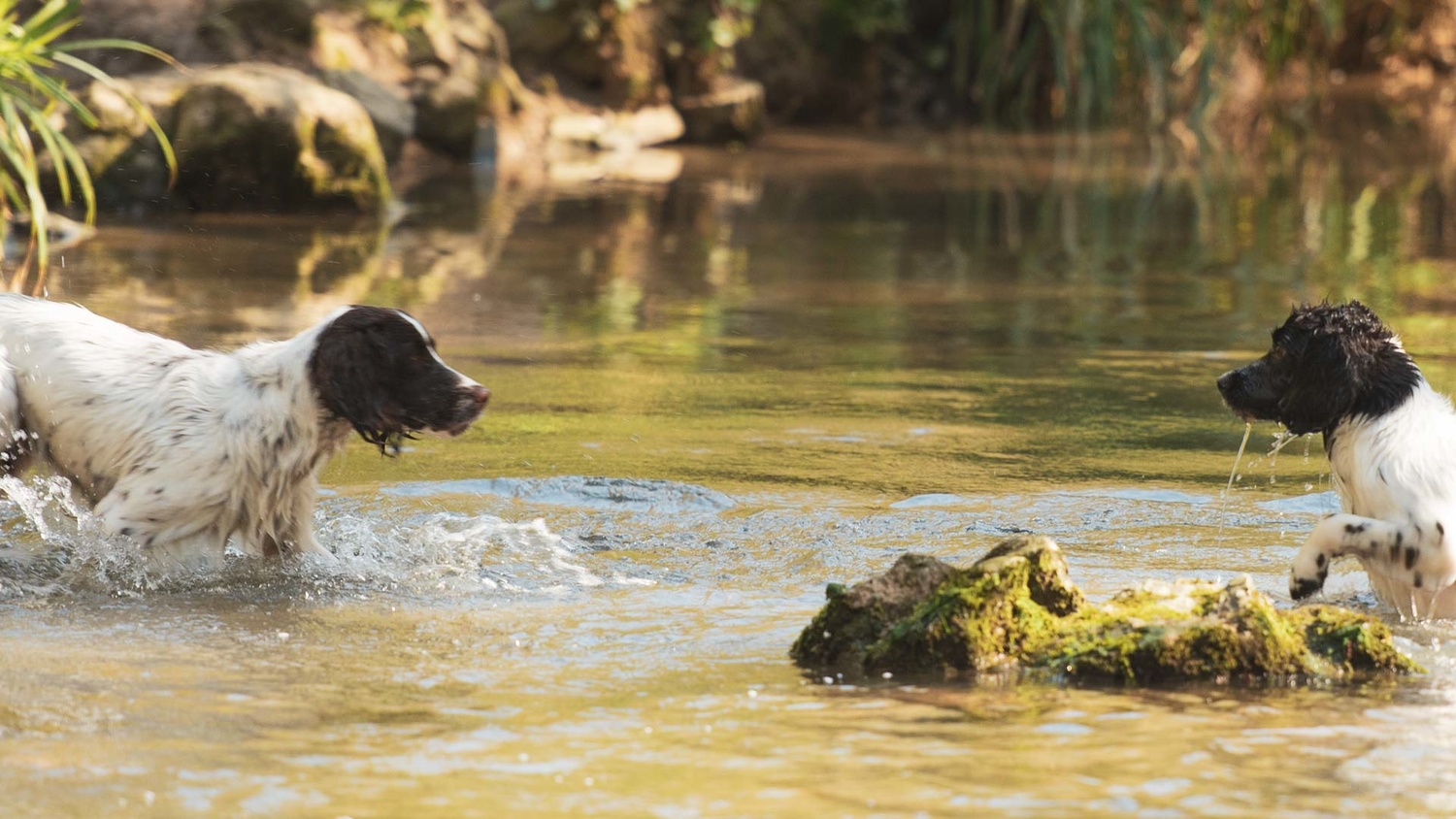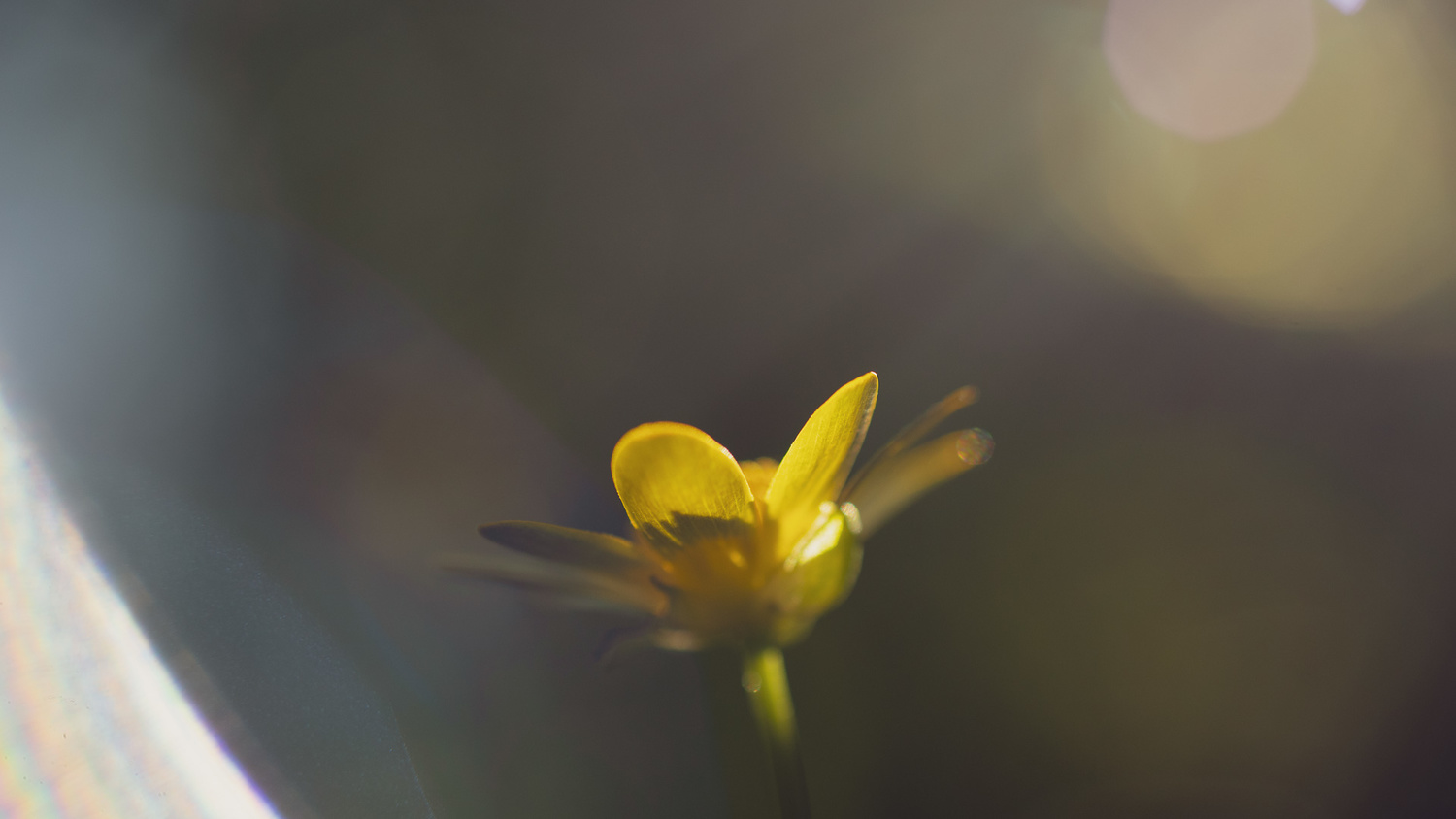Focus and sharp images are always at the top of the photographer's priority list. But you shouldn't just toss out a photo because it's not pin-sharp exactly where you want it to be. In fact, there are many reasons why you should covet that soft shot over the others.
There's so much pressure on new photographers to get everything spot-on, from camera settings to composition, technical jargon, and especially focusing. While I agree that the majority of your shots will probably need to be sharp, there are plenty of reasons why you could or should live with soft shots. Whether you've accidentally missed the focus point or have a blurry moving subject, here are my justifications for capturing shots that are a little on the softer side.
Memories

Capturing your pets playing in a stream is a wonderful way to record the memories over the years, and it's very hard to perfect pet portraiture because of how quickly animals move. But take a look at the close-crop below to see just how unsharp this image really is.
Say you're at a family get-together and you've brought along your camera to capture the day's activities. Relatives and friends have come from afar and it might be some time if you all make it back together again. Even then, everyone will be older and look different. So, imagine this: you get home to look at the shots on your computer and a bunch of images of Uncle Roger is super soft. It looks like you've missed the focus point and instead selected Auntie Helen in the background. Don't hit delete just yet, because as you scroll through the other photographs from the card, you do indeed have other shots of Rog but only the back of his head. No matter how blurry those other photos are, they may be the only stills of him together with family. Keep them not just for you but for posterity so that others in the family can look back and reflect. Who knows, maybe grandkids or great-grandkids may not have even met him.

In a closer crop of the above image, we can see that the dog on the left is in fact completely out of focus, with the dog on the right only slightly more sharp. Neither are 100%, though, but that doesn't detract from the beauty in this captured memory.
Feeling

A mixture of missed focus and intentional camera movement blur combine here to record a sweet moment during the party at a wedding. It evokes movement, fun, and a rousing atmosphere.
There's something to be said for capturing something atmospheric in stills photography. For countless decades, photographers have oohed and aahed their way over myriad lenses due to their different optical qualities, many of which have been adorned with high praise due to their unique blend of sharpness and softness in images. Even though modern technology means our lenses are getting sharper than ever before, a bit like audiophiles likes to sit down to a warm, soft-sounding vinyl record, so too do photographers like to opt for lenses with softer edges that produce more intimate photos. It's more about the feeling we create through our imagery than how technically proficient that imagery really is. At this point, we're speaking a little more artistically than scientifically here, interspersing the creative aspects of other arts like painting and drawing, but the general idea is the same: it's to evoke an emotion using photography.
Pixel-Peeping

The more time we spend looking at the photos we've just taken and inspecting closely for sharpness, the more opportunities we are missing, even ones unfolding right in front of us.
How often have you chimped at the camera and zoomed into 100% to check where the focus was? Or perhaps you've opened up Lightroom and gone right into pixel-level to check how each eyelash has rendered? This pixel-peeping, although legitimately useful for many purposes, has led many to be disconnected from their subjects. Instead of talking to your friends as you capture their portrait or noticing how the light falls across the landscape at a beautiful vista, many of us are guilty of stepping to the right spot, immediately bringing the camera up to get a snap and then analyzing the result. This may lead to many missed opportunities, especially when something happens in a fleeting moment such as a yellow taxi whizzing past a person in a yellow coat walking the opposite direction. Coincidence and luck can make a dull scene extraordinary, so if you're spending more time pixel-peeping than capturing, you may have sharp shots of nothing rather than softer shots of something incredible.
Intentional Blur

Intentionally altering camera settings in order to blur main subjects is a technique used by many who want to get creative with image-making.
You may not want to worry about the sharpness of images when intentionally blurring your photos, whether that's with intentional camera movement and a long shutter speed or by using a longer exposure to get moving subjects blurred. Not everything has to be sharp all the time. Occasionally, in specific genres of photography (such as party, events, or weddings), there may be an opportunity to capture the most out-of-focus, intentionally blurred shot of your subjects, which will tell the viewer much more than if you'd got the focus point spot-on and used a fast shutter speed to freeze the action.
Output Use

This macro close-up of a celandine flower is intentionally captured with minimal depth of field, and therefore, only a tiny slice of the flower is actually sharp. It was intended to be a filler for a large photo frame, so it doesn't need to be perfect.
Ultimately, how sharp you require photographs to depend largely on what they're going to be used for. If you're shooting the latest fashion brand and it's going to be printed and stuck upon an advertisement billboard, then yes, you probably want to make sure your main subject is tack sharp. Clients will be looking for that kind of detail to sell their product or event. However, a 6x4 print that sits on your parents' mantelpiece probably doesn't need to be as sharp. In fact, even if it was quite out of focus, it may not matter. Picture this: grandma puts your graduation portraits in a little frame next to the TV, which sits a few meters across the room. She wears glasses and has trouble seeing at the best of times. Is she really going to notice that your nose is sharp but your eyes aren't? Sharpness is relative to the intended purpose of your shot.
Overall then, there are many reasons why you might not require super-sharp shots. Although I still try to capture images as sharply as possible, so as to give me the option of adding blur later, I don't fret too much if it's not a paid gig. Feeling, posterity, and intended use factor quite heavily in how sharp those photographs really have to be. Certainly, if there is creative reasoning for missing focus or intentionally blurring your subject, then you shouldn't lose sleep over the fact a shot isn't sharp. So, instead of binning every unsharp shot, maybe have a think and save it from the trash can.







It's kind of the opposite for me. When I have my photos printed, I print them at anywhere from 36" by 24" to 48" to 32". Rarely smaller.
So when I want to see what a print of a photo will look like on my 27" 5K monitor, I have to zoom in to the image to "blow it up" the same way it will be blown up for the real print.
It is interesting that your idea of a normal print is something significantly smaller than your computer monitor, while my idea of a normal print is something significantly larger than my computer monitor.
Having moved from a 42mp Sony+85 to a 26mp Fuji+56, the difference in sharpness is apparent... when I zoom in. Upon output, the difference in sharpness is essentially non-existent.
I think it really depends on the style of photo. The examples above work just fine even though their focus isn't perfect.
In comparison say a commercial shot of a car or a studio portrait utterly requires perfect focus and without that perfect focus the work looks sloppy.
Good points. However, these points are relevant from the perspective of someone who shoots for their own needs - memories, etc. If you look at it from the perspective of a client or that of a photographer who creates photos for clients then more often than not a) the clients will not accept images that are not sharp, and b) the photographer will not consider them as a good quality results that can be delivered to the clients (as a photographer, I do reject the images if they are not in focus / not sharp). Another thing to consider is that sending photos that are not sharp enough / not in focus to clients is a reputational risk as it will have a negative impact on you as a photographer and your business.
I totally agree that for memories having the photo far and away outweighs sharpness. I have hundreds of no sharp photos of family members back into the 1800's. Here is a shot, not sharp, of my mother that beats any hyper shot anyone can produce today. Or my great grandfather, a hired gun, at his camp in the desert keeping claim jumpers off a property he was hired to protect. Also not sharp (It was colorized for me by a friend).
I think portraits need a well chosen focus point, normally on the eyes. if its off, it bugs me :-)
I agree that there are some types of images that do not have to be perfectly sharp, and that actually look better if they are somewhat soft or blurred. But for most of what we shoot, these images are the rare exception, not the rule.
The kinds of images that most of us create most of the time are ones that look their best if they are tack sharp and all of the fine detail is resolved clearly and distinctly. For every one photo that someone takes of a deer running through the woods during a blizzard, they are taking 100 frame-filling portraits of a deer that is holding still and presenting a favorable pose in "normal" well-lit conditions.
I should note that I do not take photos to preserve memories. My only purpose in taking photos is to create ":eye candy" - images that look good to the eyes and are appealing from an aesthetic standpoint.
Aesthetically focus Is not important - we use it as a tool to get results, same as exposure, composition, etc. You can have something pretty aesthetically good with no focus at all. Bare in mind that people in general got different aesthetic level, and if a clients are involved - they might not be enough open minded/evolved to see this as a tool and in the end they might perceive it as a mistake.
The photos from current artists that interest me are either shot with film cameras or are deliberately not going for pin sharpness and ‘creamy bokeh’. I like people who experiment with their cameras, either using particular lenses and or techniques that move away from the clinical sharpness that is so abundant nowadays (commercial work needing sharp images is an exception to this).